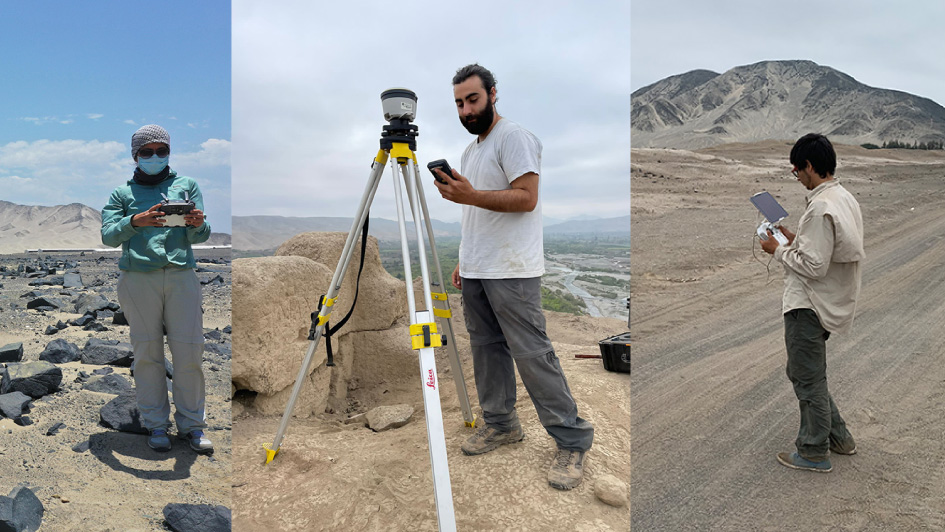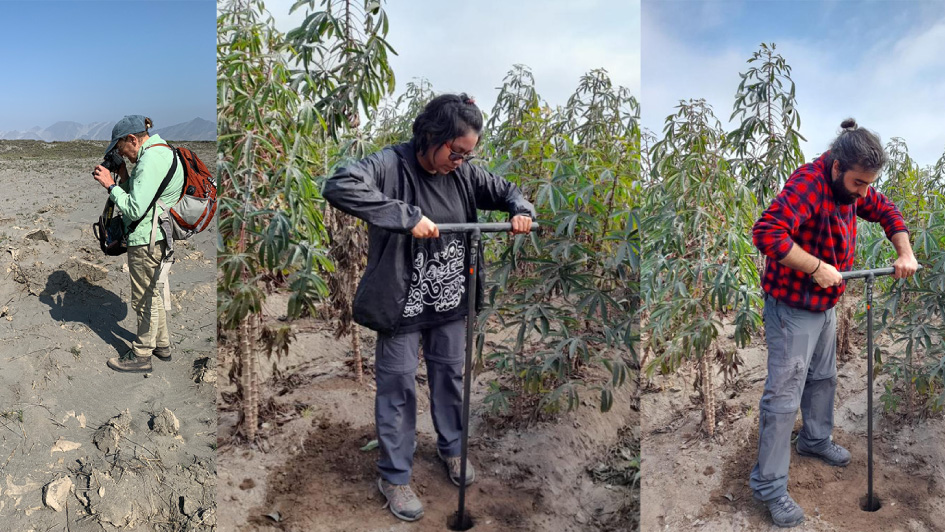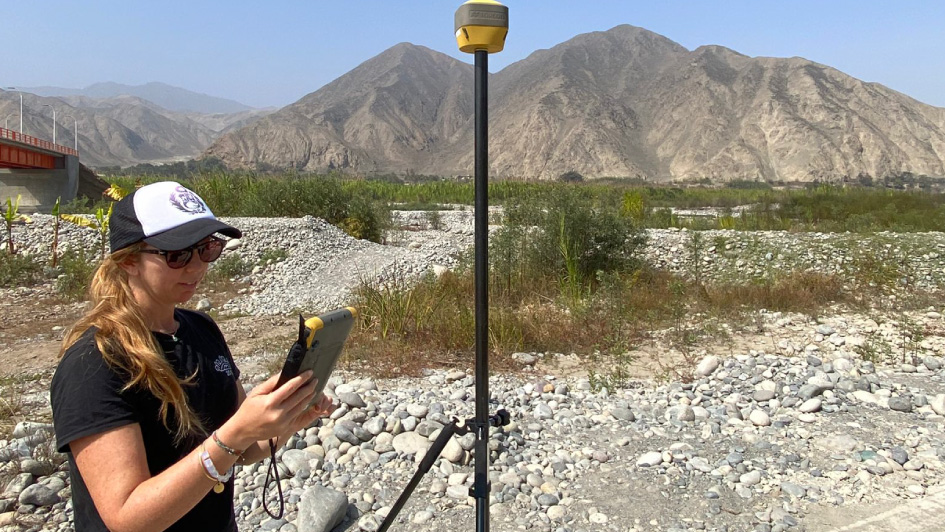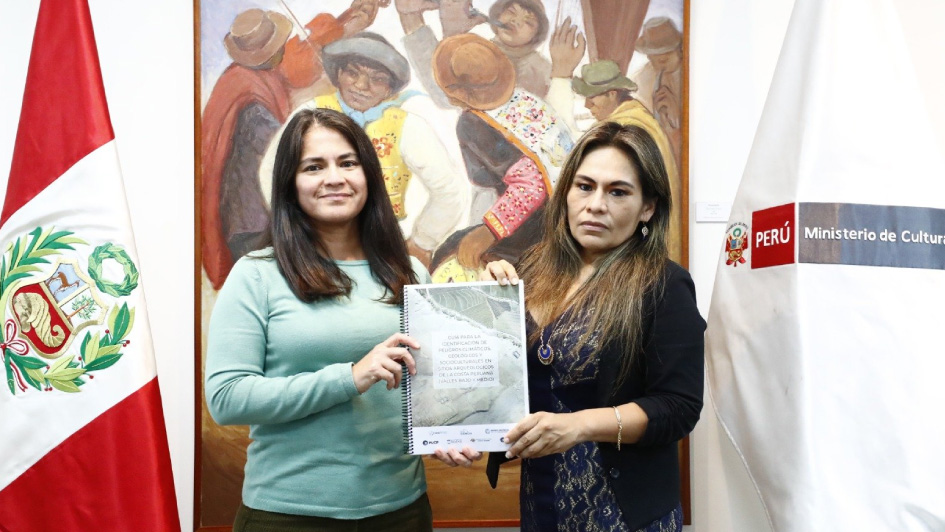




The Past in Danger: Geological, climatic, and cultural factors affecting the conservation of archaeological heritage on the Peruvian Coast is a multidisciplinary research project that incorporates archaeology, geoarchaeology, and geology.This initiative involves the participation of PUCP, the Universidad Nacional de Trujillo and the Climate Change Institute of the University of Maine.
As part of the joint work, the Guide titled "Identification of Climatic, Geological,and Sociocultural Hazards in Archaeological Sites along the Peruvian Coast" was presented to the Ministry of Culture. Ana Cecilia Mauricio,Ph.D., professor in the Department of Humanities and coordinator of the project, provides further information in this interview.
We recognize the crucial significance that immovable archaeological heritage (archaeological sites) holds for our country. Such sites not only serve as tourist attractions but also contribute to our economic, social and cultural growth. Our archaeological heritage is an invaluable source of development, but it is under constant threat and any damage can result in its permanent loss. In this context,we applied for a grant from Concytec (ProCiencia) to conduct multidisciplinary research aimed at studying this problem and contributing to the preservation of our cultural heritage based on our experience.
This research sought to identify the primary natural and cultural hazards that may affect the preservation of coastal archaeological sites. The aim was to identify hazards that are common to the entire Peruvian coast. In the current context of global warming and overpopulation in coastal areas, Peru is highly susceptible to the effects of these phenomena, particularly along the Peruvian coast. In the context of rising global temperatures, phenomena such as El Niño are expected to become more frequent and more intense. Likewise, the growing global population and limited resources and opportunities result in the concentration of populations in regions like the Peruvian coast.

This guide proposes a methodology for identifying hazards with the use of open access information that is produced by the Peruvian State through different institutions."
Ana Cecilia Mauricio, Ph.D.
PUCP Professor and Project Coordinator
Peru is directly affected by both global and coastal El Niño, making it one of the countries most impacted by the phenomenon. The heavy rains and resulting floods not only damage modern infrastructure but also affect archaeological sites,including museums and tourism infrastructure.
It is the result of two years of field and laboratory research to produce a methodology to identify the main climatic (hydro geological) and cultural risks. For this,we work together with the University of Maine (United States) and the Universidad Nacional de Trujillo.
Work was carried out in the Chao, Santa and Cañete valleys to produce information that helps us propose a hazard identification methodology that can be applied to the entire Peruvian coast.
This guide proposes a hazard identification methodology with the use of open access information that is produced by the Peruvian State through different institutions, such as Ingemmet, the Ministry of Agriculture, the Ministry of Environment, Indeci, Cenepred, ANA, INEI, among others. It also proposes to analyze and process this data via open-access geographic information systems to generate maps and plans of areas susceptible to environmental and social hazards. This guide proposes a methodology that is easy to implement, and that can be regularly updated and refined. It is a document intended for use mainly by State institutions related to the protection of archaeological heritage,including the Ministry of Culture, seeking to help a more informed decision-making thereby ensuring the efficient use of the scarce resources that are designated for this issue. However, this guide is also applicable to local authorities,such as municipalities or regional governments and private entities. This is an open-access document that seeks to reach more people or institutions related to the topic.
We hope that this guide can be used by the Ministry of Culture and its decentralized directorates in different regions, refining and adapting it to meet specific circumstances and needs. We have recommended creating an office dedicated to the production and analysis of data of this type aimed at adapting protective measures to address climate change. For our part, we hope to continue producing information that enhances this proposal and publish more freely available information concerning the protection of our archaeological heritage in a sustainable manner with foresight toward the future.
© 2020. Pontificia Universidad Católica del Perú – All rights reserved.